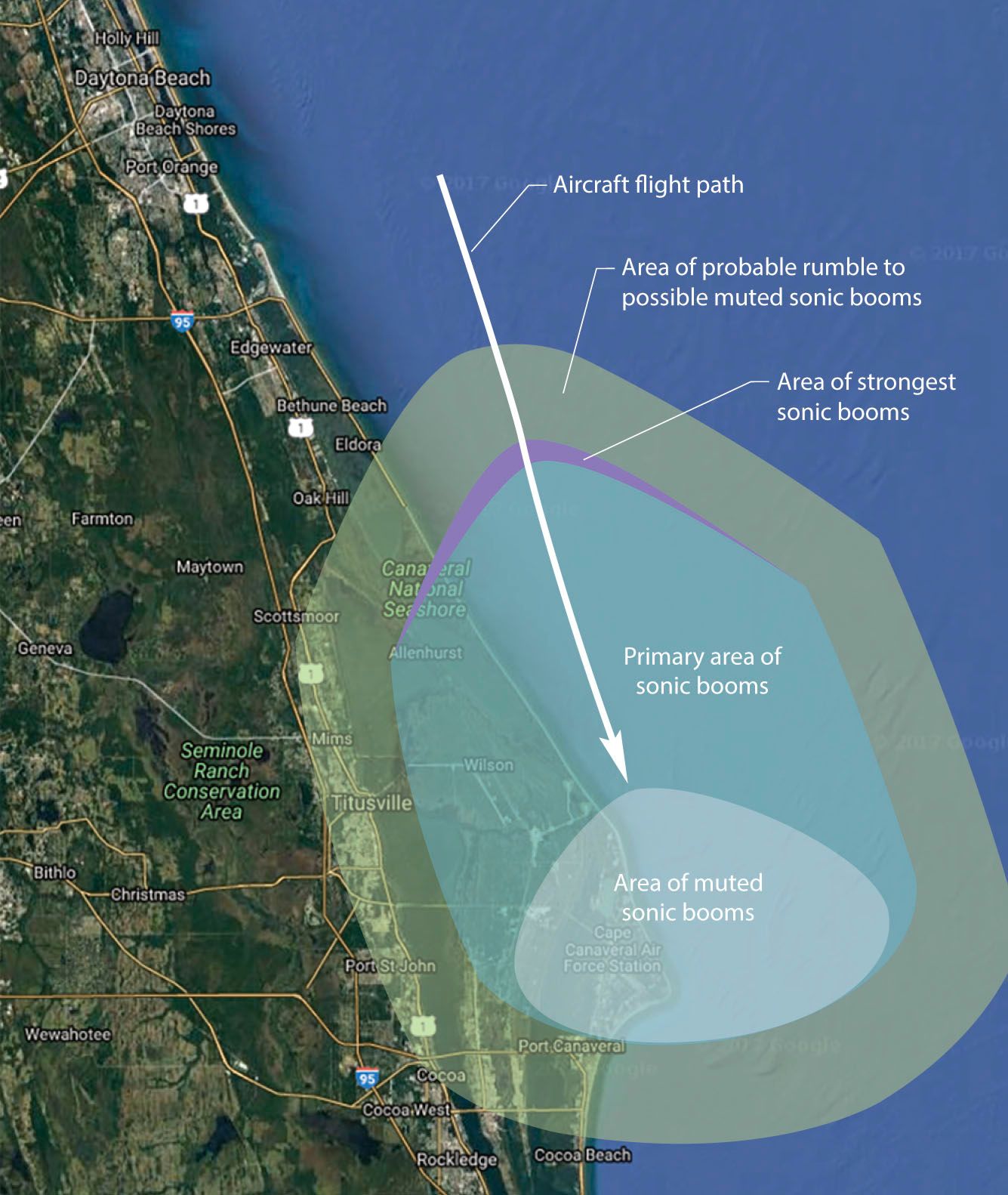BREVARD COUNTY, Fla. - Florida Today reports that this week's solar eclipse isn't the only scientific phenomenon darting across the Space Coast. Residents could witness window-rattling sonic booms as NASA aircraft attack the speed-of-sound threshold for a series of experiments which began Monday.
Two NASA-operated F/A-18 Hornets, scientists and related support teams from across the country have converged on Kennedy Space Center to kick off a series of flights designed to produce 33 sonic booms just off the coast over the next two to four weeks.
The experiment, named Sonic Booms in Atmospheric Turbulence, or SonicBAT, is studying sonic booms in a variety of climates to gather data and understand ways to reduce their intensities to "thumps." The first SonicBAT tests were conducted in dry climates, but these flights will collect data over the Space Coast's more humid airspace.
"One of the main things we expect is how it sounds to the human ear," said Larry Cliatt, co-principal investigator for SonicBAT, during a news conference last week with reporters at Kennedy Space Center. "We expect that humidity tends to produce a louder crack."
"What we want to do is see how the humidity affects [atmospheric] turbulence, he said.
Supersonic flight over land is prohibited in the United States primarily because of the disturbances caused by the booms as well as increased emissions from aircraft accelerating to break the sound barrier, also known as Mach 1 – but that could change thanks to this research.
"Speed is why NASA is interested in supersonic flight," said Peter Coen, NASA's Commercial Supersonic Technology project manager. "We believe that decreased travel time is the key element of the future of air travel and are conducting research on approaches that will overcome barriers to practical supersonic airliners."
Teams from NASA's Armstrong Flight Research Center in California and Langley Research Center in Virginia will collect data as the former Navy F/A-18s take off from Kennedy Space Center's Shuttle Landing Facility and vault to an altitude of 32,000 feet just off the coast of Cape Canaveral. Once there, pilots will head south and accelerate to Mach 1, or the speed of sound, to produce sonic booms.
A TG-14 motorized glider equipped with dozens of microphones will deploy to a lower altitude, cut its engines to reduce ambient noise, and record the sonic booms for review by researchers. Multiple microphone arrays on the ground will also record the flights.
Multiple daily flights are planned for the experiment, which could run until early September and produce up to four booms per day. The timeline, however, could be altered in the event of weather-related delays.
But how much of a reduction in noise do researchers hope to accomplish?
"If you can imagine the Concorde boom as being the sound of thunder when the storm is right overhead, what we're looking for is after the sun has come out and the clouds are way off in the distance, you hear that little bit of rumble," Coen said. "That's the type of noise we expect from future airliners."
While sonic booms generate immense amounts of energy, residents in the north part of Brevard County need not worry – the shockwaves aren't dangerous.
"We have carefully planned our flights so that there is little chance that people in larger communities such as Titusville to the west, or Cocoa Beach to the south, will be disturbed," said Ed Haering, SonicBAT's principal investigator, in a July news release. "Residents might hear a distant sound similar to a rumble of thunder. If the actual winds at the time of our tests are much different from predicted, they might hear a boom sound like those heard when the space shuttle landed."
"At the altitudes we are flying, sonic booms from aircraft have never been dangerous to people, animals or buildings, but they can be startling," he said.
NASA is developing an experimental airplane called the Low Boom Flight Demonstration aircraft, or LBFD, which should cross the supersonic threshold without producing a loud sonic boom. Its maiden flight could occur as soon as 2021.


